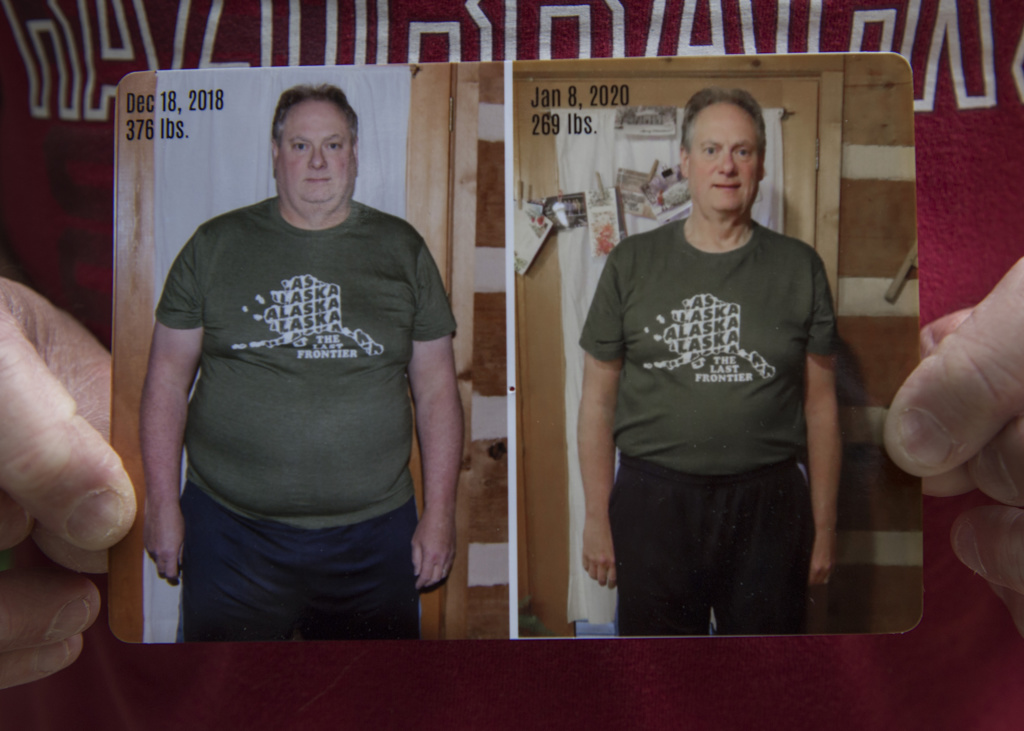At a strapping 6-foot-3, James Root has always been on the move.
As the youngest of six children growing up on a dairy farm in New York, his energetic spirit found an outlet in all types of sports.
He kept active when he went to college—the University of Arkansas, where he earned a degree in industrial engineering. Later he landed in Owosso, Michigan, for a new job.
Even there he found ways to keep moving.
“I enjoyed all kinds of sports,” he said. “And even as I worked for Herman Miller, an office furniture business, I participated in company-sponsored sports, mostly basketball.”
Root, now 62, is in his 10th year at the helm of his own consulting business. He travels the country to help other businesses improve their manufacturing processes.
But that lifestyle came at a cost.
The busier he became with consulting over the years, the less time he had for fitness.
“I became less and less active as I was traveling so much,” he said. “Skipping breakfast, eating late into the night, eating at restaurants. And I loved sweets.”
Gradually, the scale ticked up. At his heaviest, he weighed 390 pounds.
That introduced other health issues.
“No diabetes,” Root said. “But I did have high blood pressure and sleep apnea. And it became hard to go up and down stairs or get in and out of the car. I needed knee replacements, but I couldn’t get them because of my weight.”
Gains and losses
Root tried various diets, but even when he lost weight he invariably found he’d gain it back again—and then some.
“I lost 100 pounds in 2008 in a medically supervised diet at Spectrum Health,” Root said.
By 2018, he had regained that weight.
So he decided to look into bariatric surgery.
He made an appointment with Jon Schram, MD, bariatric surgeon at Spectrum Health Bariatrics.
“It was March 15 of that year that I went in to see Dr. Schram,” Root said. “I was at 49.8 body mass index at that point and my insurance wouldn’t cover bariatric surgery at 50 BMI or over. So I just made it.”
Dr. Schram explained the options to Root, who soon settled on gastric sleeve surgery, or sleeve gastrectomy.
“About 80% of my patients choose sleeve surgery,” Dr. Schram said. “Sleeve surgery—rather than gastric bypass—is less disruptive to lifestyle and it’s easier to tolerate different foods.”
On average, patients who undergo gastric sleeve surgery can expect to lose 50 to 65% of their excess weight, Dr. Schram said.
“During sleeve surgery, which takes about 45 minutes, we remove approximately 80% of the stomach and create a new, tubular stomach that is about the size of a banana,” Dr. Schram said. “After surgery, usually patients can consume 1,000 to 1,200 calories per day. Success rates are high. We do thousands of these surgeries per year at Spectrum Health.”
Prior to surgery, Root participated in six months of classes to learn more about the procedure.
He also had a psychological evaluation to ensure he could undergo the drastic change in lifestyle.
“I also had monthly visits with a dietitian,” he said. “I started on a diet to show that I can lose weight. And I was down to 371 when I went in for surgery on Dec. 16, 2018.”
Downsizing
Root had surgery at Spectrum Health Zeeland Community Hospital, a short hop from home.
“Dr. Schram found that I had a small hernia, too, and he fixed that during surgery as well,” he said. “I was surprised how quickly I recovered. I stayed overnight in the hospital and left the next morning.”
For the first two weeks he kept to a liquid diet that included broth, protein shakes and yogurt.
“I didn’t feel hungry at all,” he said. “In the first three months, I lost 80 pounds. The pounds just melted off.”
His diet tends to place less emphasis on food choice and more on portion control. The smaller, the better.
“The dietitian told me to get 60 grams of protein every day,” he said. “And I drink four to six 8-ounce cups of water per day.”
He admits he’s still not great about eating vegetables—he’s working on that—but he enjoys lean meats to keep up his protein intake, including seafood, filets of beef and poultry.
To maintain his calorie count and his nutritional needs—with a focus on protein—he uses the My Fitness Pal app on his cell phone to track his daily intake.
“My dietitian suggested that before surgery,” he said. “And I liked it so well that I kept using it after. Eventually, the weight didn’t come off as fast as in those first months, but I’m down to 270 pounds now. That’s a loss of 120 pounds in 13 months!”
His goal: 220 pounds.
When traveling for business, Root now often asks for the kids menu at restaurants.
He ignores the raised eyebrows.
At home, his wife, Elizabeth, who favors a vegetarian diet, cooks for him. She lovingly nudges him with an, “I told you so!”
“You should have done this a long time ago,” she says.
Root has taken up sports again, playing basketball, biking and swimming.
He no longer uses a continuous positive airway pressure machine for his sleep apnea, a condition that has since disappeared.
“You know, I’m also a tenor saxophone player,” he said. “A group of us gives performances around the state, maybe 40 or so per year. That’s easier now, too, including the marching in parades with the band.”
And yes, Root agrees with his wife.
“I’ll admit, I was a bit skeptical at first,” he said. “But now I would say I wish I had done this 15 or 20 years ago.”
It’s not cheating—it’s just another tool for weight loss, he said.
“It can be a huge adjustment for the body, but in the long run it’s easier than you think,” he said.
















 /a>
/a>
 /a>
/a>
 /a>
/a>